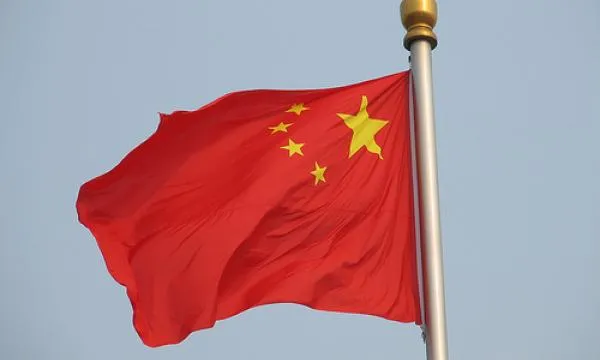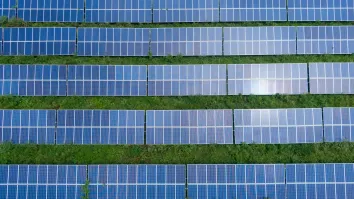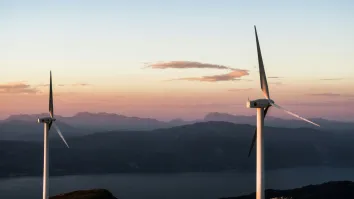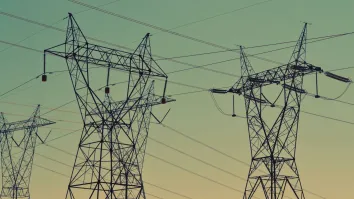
The stakes are higher in China's energy transition
With a newly opened retail market, the country might be halfway in its energy transition, but issues on its overseas investments in coal are potential hurdles.
Renewables have displaced coal and fossil fuels in powering China’s gigantic economic machine, taking 38% of the energy mix and leaving a third of it to thermal power sources in 2018, data from the National Energy Administration (NEA) showed. However, it will need more renewables not only to address the environmental, social, and health impacts of its traditional energy sources that have built up over the decades but also to hold up the growth of its massive economy which has begun to slow down.
The latest China Renewable Energy Outlook noted that renewable energy sources will become the core of China’s energy system by 2050, with about 80GW to 160GW of annual solar photovoltaic (PV) installations expected. The report, which was released on the sidelines of the 24th Session of the Conference of the Parties to the United Nations Framework Convention on Climate Change (COP24) in Katowice, Poland in December 2018, noted the need to move China’s power sector towards a more sustainable path, with renewables now bannering the transition compared to being a mere add-on to coal and fossil fuel in previous national energy strategies.
This is in line with the government’s 13th Five-Year plan, its economic and development blueprint for the next half-decade. “The single most important step now is to reduce coal consumption in China,” the report authors noted. This sentiment also reverberated amongst the international community—highlighting the Chinese government’s efforts as aligned with global interests—with a host of multilateral development banks, which include the likes of the World Bank and the Asian Development Bank (ADB), announcing a joint framework to combat climate change and carbon emissions globally.
Following decades of economic success, China is at the forefront again of what could be a revolution towards more sustainable and renewable energy sources. Whilst China’s energy demand and consumption continues to rise, experts and observers said this should not mean an increase in the use of coal as a main source of energy.
Kaare Sandholt, chief expert at China National Renewable Energy Centre, noted that in order to reduce the effects of global warming, China needs to reduce its coal consumption significantly and replace it with wind turbines and solar panels. “We can prove that in 2050, China will be able to rely on an energy system with significantly less use of both coal and oil,” Sandholt added.
Shakeup of energy mix
With annual solar photovoltaic installations expected to reach 80GW to 160GW per year, wind is also expected to increase between 70GW to 140GW annually. This will push both renewable energy sources as the core of China’s energy system by 2050, according to the state-sanctioned report, with the country’s dependence on fossil fuels declining to 30%.
The focus on renewables, according to the outlook, will not only provide a more sustainable and secure energy future for China, but also spell a boost to the country’s pursuit of sustainable growth and development, particularly in 2025-2035. “This positive effect is greater than the negative effects related to a decrease in employment in fossil energy such as coal and thermal power generation” which may lead to more health risks and, in turn, incur more social costs to societies, the report said.
One of the significant effects of increased renewables development involves China’s acceleration to become the far fastest expanding electric vehicle (EV) market over the coming decade. According to Fitch Ratings, China’s Battery Electric Vehicle (BEV) fleet could hit 11 million vehicles by 2027, compared to 3.4 million vehicles in Europe, and 1.4 million vehicles in the US.
The upside risk is that Chinese air pollution reduction efforts ramps up more than expected, with EV storage playing an active role in integrating intermittent wind and solar power supplies. Fitch Ratings said China could harness its substantial EV fleet to support the integration of increasing volumes of intermittent wind and solar power in the market through technology called vehicle-to-grid solutions (V2G). However, coal generation overcapacity could mean that this V2G deployment will be less important to energy security in China than for example Western Europe, where baseload capacity is going of line at a rapid pace, it said.
V2G entails a two-way tow of electricity between electric vehicles and the grid, with EVs helping to balance power supply and demand by charging during peak supply, and selling power back to the grid during peak demand, the firm explained. “China’s surging EV segment will mean that the country will be able to scale up V2G solutions before any other market, and at a scale unrivalled over the coming decade,” Fitch Ratings added.
However, China’s leadership in renewables investment seems to be challenged by its own actions. A report by the Institute for Energy Economy and Financial Analysis (IEEFA) revealed that it has committed or proposed about $36b in financing for about 102GW of coal-fired capacity in 23 countries. Of the 399GW of coal plants currently under development outside China, Chinese financial institutions and corporations have committed or offered to fund for over one-quarter of them, or 102GW.
Whilst the Chinese government has signalled it will restrict coal lending, the country has yet to formally limit its investment in coal plants. “Instead, Chinese finance is increasingly stepping in as the lender of last resort for coal plants, as other banks take active measures to restrict their funding,” said IEEFA researcher Christine Shearer.
The country with the most coal-fired capacity supported by Chinese finance is Bangladesh, followed by Vietnam, South Africa, Pakistan, and Indonesia. About 76GW of the 102GW of capacity is in pre-construction status.
IEEFA also revealed that Chinese companies often act as engineering, procurement, and construction (EPC) contractors for the projects, and increasingly as co-managers and owners. Of the 102GW of global coal-fired capacity supported by Chinese finance, 30GW involves joint ownership with Chinese firms.
Moreover, the biggest lenders are Chinese policy banks: China Development Bank and the China Export-Import Bank, followed by Chinese state-owned commercials banks such as the Bank of China (BOC) and the Industrial and Commercial Bank of China (ICBC). The corporations most involved are large state-owned entities, including utility monopoly State Grid Corporation of China, infrastructure group China Energy Engineering Corporation, and power giants State Power Investment Corporation and China Huadian Corporation.
Funding for these projects leaves China increasingly isolated as other nations move away from supporting coal, IEEFA added. In terms of international financing for future coal plants by state-owned policy banks, China is by far the leader with 44GW of capacity, followed by South Korea with 14GW and Japan with 10GW.
However, the picture is not completely dim for China’s global energy investment as China is also a world leader in developing sustainable renewable energy projects. In 2014 and 2015, it launched two multilateral development banks, the Asian Infrastructure Investment Bank (AIIB) and the New Development Bank (NDB), both of which have a priority focus on low emissions technology deployment.
As of July 2018, the NDB had approved 23 projects valued at $5.7b, with a primary focus on renewable energy, energy conservation, water access, and sustainable development infrastructure. “However, to-date the investment in coal-fired power plants globally by traditional China’s state-owned banks are far more significant than the AIIB and NDB. It is also undermining the stated strategy of the AIIB to enhance and support the Paris Agreement.,” Shearer commented.
China should reconsider its funding for export coal mines, coal-fired power plants, and the associated rail and port infrastructure, according to Shearer. The Belt and Road Initiative (BRI) has driven $8b of solar equipment exports from China, helping China overtake the US and Germany to be the top exporter of environmental goods and services. “It makes sense for China to continue to build on its position as the global leader in renewable energy development as the world moves away from fossil fuel-based capacity,” she said.
With the scale and significant impact of developments in China’s energy scene, some wonder if reform in the country can keep up. Joseph Jacobelli, senior analyst — Asia utilities, Bloomberg Intelligence, described the speed of reform in China as “absolutely staggering” during a conference in September 2018.
“It is creating opportunities - it is in an embryonic stage - the retail power markets have only just started. As you imagine, there’s a lot of hurdles, but there are some companies that are already taking advantage of that to create new income streams,” he said, and noted that 35% of the electricity market could already be deregulated in 2018.
“If you take the fact that China power is about $90/MWh, I think you’re talking about a market which is almost $600b right now. Out of that $600b, one-third or $200b is now basically deregulated. And that market is prone to be something like $680b, assuming that $90/MWh — which is the average end-user price in China — go up which probably is not gonna happen in a couple of years as the government wants to keep prices low,” Jacobelli explained.
Bloomberg Intelligence mapped out the locations of the bulk of non-regulated retail activity for the first half of 2018, referring to client agreements which involve the producer, the buyer, as well as the grid. Most of the trading happens in East China (26-27%), followed by North China (25-26%), Northwest China (25%), and South China (24-25%).
Previously power was sold through the State Grid Corporation of China, China Southern Grid, or the Mongolian Grid. Now, non-regulated power sales now take over the total sales of top power utilities like China Yangtze Power (10%), Huaneng Power International (38%), China National Nuclear (23.7%), CGN Power (34.9%), based on Bloomberg Intelligence’s estimates.
The structure of sales is not limited to auctions (which is now present in 20 provinces), as other interesting formats that Bloomberg Intelligence has recorded include bi-lateral contracts that last for one to three years and listed bidding. Notably, Guangzhou has had 61 sellers and 143 buyers trade 4.42TWh at an average discount of CNY45/MWh in its power exchange during September 2018.
“It’s a lot more vibrant than people think,” Jacobelli said. The scene is so vibrant that the number of retail companies has grown to a whopping 3,410, he added. With a huge amount of retailers at present, the analyst noted that there’s meant to be a lot of consolidation in the next three to four years, but for now, a lot of these companies are active. “What’s exciting about the Chinese market, well obviously, a degree of monopoly erosion is yet to start, but it’s written in big, red letters on the wall that it’s happening, because the central government does want to reduce the market power of the State Grid especially,” he said.
Flow of investment
Whilst China is expected to maintain its status as the world’s largest market for clean energy investment, Bloomberg New Energy Finance (BNEF) revealed that it is no longer the most attractive one in its Climatescope 2018 rankings as it dropped to rank seven. “China was accumulating an unsustainable subsidy budget deficit, which meant that a national fund intended to pay renewables developers above-market tariffs was not receiving sufficient capital injections to cover its obligations to the sector,” Climatescope project director Ethan Zindler said.
“Whilst China remains the largest market for clean energy build by far, curtailment issues and the halting of subsidies to solar generators dented its score. Climatescope’s updated methodology also places greater emphasis on countries’ openness to international investors over the availability of local manufacturing. Whilst these changes contributed to China’s drop, its unrivalled clean energy investment and potential for decarbonisation ensured it remained in the survey’s top ten,” Zindler added.
To resolve this, Zindler noted that China would either have to resort to unpopular levy increases on retail electricity prices or inject funds directly from the government’s budget. On 1 June 2018, when it was recorded that about a third of commissioned renewables have yet to receive their first subsidy payment, China said it was restricting new solar installations that would require the national subsidy until a solution to funding the deficit was found.
The effect of the policy was seismic, as Chinese solar investment plunged 53% to $40.4b and in turn, pushed down global solar investment by 24% to $130.7b for 2018, a separate report from BNEF has revealed. The country’s total clean energy investment also fell 32% to $100.1b solely because of the plunge in the value of solar commitments.
Jon Moore, chief executive of BNEF, commented: “Once again, the actions of China are playing a major role in the dynamics of the energy transition, helping to drive down solar costs, grow the offshore wind and EV markets and lift venture capital and private equity investment.”
Green bonds are also helping China boost its status in global renewables investment and it will need $447.05b to $596.06b (CNY3-4t) to help its businesses become more sustainable, Chinadialogue said in 2018. Since 2015, “businesses are using them to update production facilities and reduce their ecological footprint, cities to electrify infrastructure, and finance institutions to raise funds to lend to small and medium-sized enterprises that have prospects for bringing innovative green technologies to market,” said Wang Yao, director general of the International Institute of Green Finance (IIGF) at the Central University of Finance and Economics.
Notably, some global investors have already hopped on this trend. FTSE Russell launched a new index tracking solely Chinese green bonds at the start of 2019. Called the FTSE Chinese (Onshore CNY) Green Bond Index Series, the index benchmarks securities with proceeds that are specifically used to finance climate or environmental projects in mainland China. It covers 75% of all on-shore labelled green bonds issued by China’s government, agencies and corporations.
Waqas Samad, CEO Benchmarks at FTSE Russell, noted increased demand from their global customers. “In 2017, China green bonds issuance represented 23% of global green bond issues and the market is expected to continue to grow significantly over the coming years. The combination of FTSE Russell’s strong capabilities in fixed income, sustainable investment and regional presence in China allow us to develop innovative tools to help meet the growing demand from our global customer base,” he said at the launch of the index.



















 Advertise
Advertise






